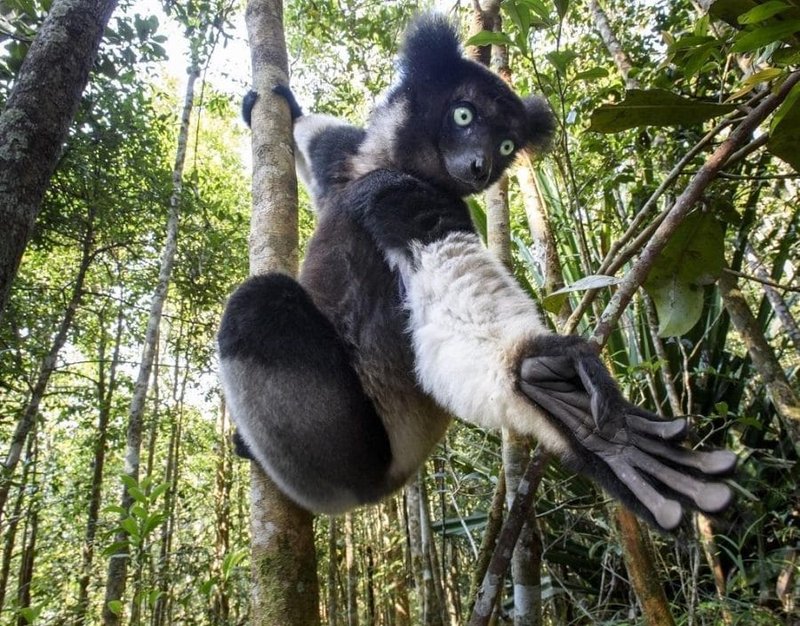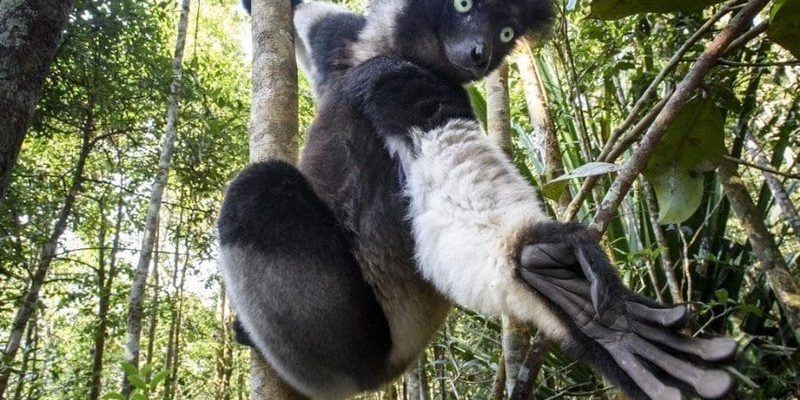
Imagine wandering through the lush rainforests of Madagascar, surrounded by vibrant greenery and the sounds of exotic wildlife. Suddenly, the high-pitched, eerie calls of the Indri echo through the trees. It’s a mesmerizing experience, but it raises questions about this fascinating creature. So, can the Indri, with its adorable looks and impressive vocal range, pose any threat to us humans? Here’s what you need to know.
The Indri: A Brief Overview
Before diving into whether the Indri can be dangerous, let’s get to know this animal a bit better. The Indri (Indri indri) is a primate that belongs to the lemur family. They’re the largest living lemurs, growing up to about three feet tall and weighing around 15 to 20 pounds. Their fur is typically black and white, which makes them look a bit like fluffy, living panda bears.
These creatures spend most of their time in trees, munching on leaves, fruits, and flowers. They’re known for their impressive jumping skills—some say it’s like watching a fluffy ball of energy soar through the air! Their unique vocalizations can travel for miles, which helps them communicate with their groups, or troops. It’s like having a built-in speaker system in the forest!
Human Interactions with the Indri
You might be surprised to learn that the Indri isn’t a particularly aggressive animal. They’re generally shy and prefer to stay out of humans’ way. This makes them more of a gentle giant rather than a fierce predator. However, their territory is crucial to their survival, and they can become defensive if they feel threatened. It’s important to respect their space in the wild.
In Madagascar, local cultures often regard the Indri as sacred. Some believe that harming them could bring bad luck or misfortune. This cultural respect can lead to a harmonious relationship between humans and these fascinating creatures. So, while the Indri doesn’t actively seek out confrontation, a lack of awareness or respect can sometimes lead to skirmishes.
Can They Attack Humans?
Let’s address the elephant in the room: can the Indri actually attack humans? The short answer is: it’s rare. Indris are more inclined to flee than fight, and their primary defense mechanism is their impressive ability to escape into the trees. However, if a human gets too close to their young or invades their territory, an Indri may respond defensively.
What does that look like? Typically, you might hear loud vocalizations as a warning. If that doesn’t work and they feel cornered, they might swat at you with their strong limbs. It’s not exactly a bite or a clawing attack you might expect from a wild animal, but those long limbs can pack a punch if you’re in the way!
Understanding Indri Behavior
To really grasp how to interact with Indris, it’s critical to understand their behavior. These primates are social animals, living in small family groups. Their vocal calls serve as a form of communication—think of it like a group chat in the treetops! When they call, they’re often marking their territory and keeping in touch with clan members.
Additionally, their social structure can influence how they react to humans. A group of Indris may be more protective of their territory and young ones during mating season. This is when they might exhibit more defensive behaviors. Knowing this can help you understand why a seemingly cute animal might react strongly under certain circumstances.
Why Respect Matters
Respecting Indris, or any wildlife, is crucial for a harmonious coexistence. Not only does this safeguard you, but it also helps protect these remarkable creatures. By staying at a respectful distance and minimizing disturbances, we can ensure that future generations get to experience the same wonder of the Indri.
Here’s the thing: humans have a significant impact on animal behavior through our actions. Loud noises, sudden movements, or trying to move too close can escalate situations unnecessarily. It’s best to observe these animals from a distance—like watching your favorite movie without jumping onto the screen!
Conservation and the Indri
The Indri faces numerous threats, primarily from habitat destruction and hunting. Conservation efforts are essential for their survival, as they are considered endangered. Protecting their environment not only benefits them but also preserves the unique ecosystems of Madagascar. We can support these efforts by spreading awareness and advocating for responsible tourism practices.
By creating a buffer between ourselves and their habitats, we can help secure a future for the Indri and nurture the biodiversity that exists in their native forests. So, if you ever find yourself in Madagascar, think about how you can contribute positively to their environment.
Wrapping It All Up
So, can the Indri be dangerous to humans? While they have the capability to act defensively, actual attacks are rare and usually stem from a sense of threat. Understanding these creatures and respecting their space is vital for peaceful interactions. Let’s cherish the amazing wildlife we have on our planet and work to protect them—even the ones that may occasionally surprise us!
By learning more about the Indri, we can appreciate not just their beauty but also the unique role they play in the ecosystem. With your newfound knowledge, you’re better equipped to enjoy the wonders of this incredible primate while respecting its boundaries. Happy exploring!

